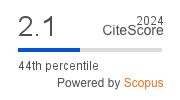Robustness of NMF Algorithms Under Different Noises
DOI:
https://doi.org/10.4108/eetiot.v9i1.3271Keywords:
Machine Learning, Nonnegative matrix factorization, Robustness of algorithm, NMFAbstract
In machine learning, datasets are often disturbed by different noises. The Nonnegative Matrix Factorization (NMF) algorithm provides a robust method to deal with noise, which will significantly improve the efficiency of machine learning. In this investigation, the standard NMF algorithm and L2,1-Norm Based NMF algorithm are studied by designing experiments on different noise types, noise levels, and datasets. Furthermore, Relative Reconstruction Errors (RRE), accuracy, and Normalized Mutual Information (NMI) are used to evaluate the robustness of the two algorithms. In this experiment, there is no significant difference in performance between the two algorithms, while L2,1-Norm Based NMF algorithm shows relatively small advantages.
Downloads
References
Deng, X., Ma, Y., & Dong, M. (2016). A new adaptive filtering method for removing salt and pepper noise based on multilayered PCNN. Pattern Recognition Letters, 79, 8-17.
Díaz, A., & Steele, D. (2021). Analysis of the robustness of NMF algorithms. arXiv preprint arXiv:2106.02213.
Kong, D., Ding, C., & Huang, H. (2011, October). Robust nonnegative matrix factorization using l21-norm. In Proceedings of the 20th ACM international conference on Information and knowledge management (pp. 673-682).
Lee, D. D., & Seung, H. S. (1999). Learning the parts of objects by non-negative matrix factorization. Nature, 401(6755), 788-791.
Shen, X., Zhang, X., Lan, L., Liao, Q., & Luo, Z. (2019). Another robust NMF: rethinking the hyperbolic tangent function and locality constraint. IEEE Access, 7, 31089-31102.
Downloads
Published
Issue
Section
License
Copyright (c) 2023 EAI Endorsed Transactions on Internet of Things

This work is licensed under a Creative Commons Attribution 3.0 Unported License.
This is an open-access article distributed under the terms of the Creative Commons Attribution CC BY 4.0 license, which permits unlimited use, distribution, and reproduction in any medium so long as the original work is properly cited.




